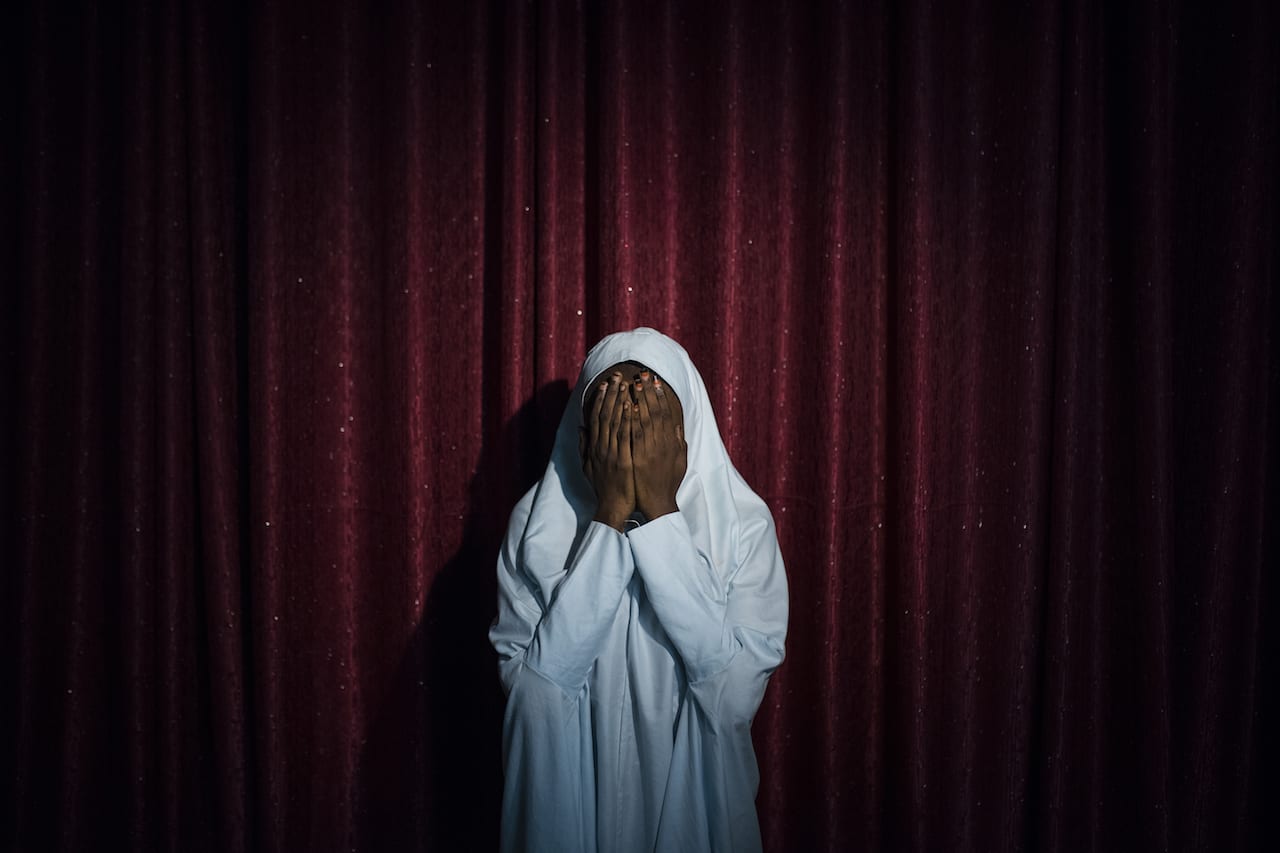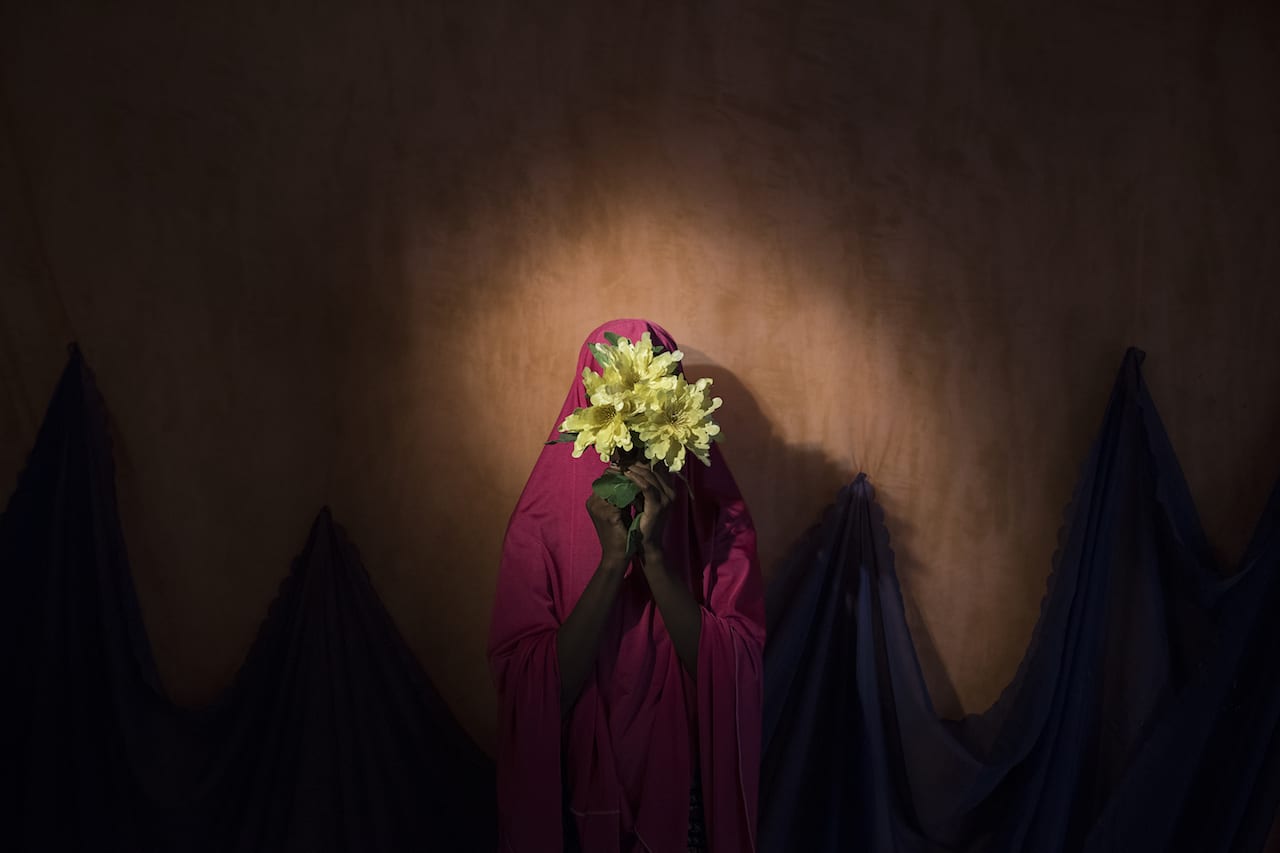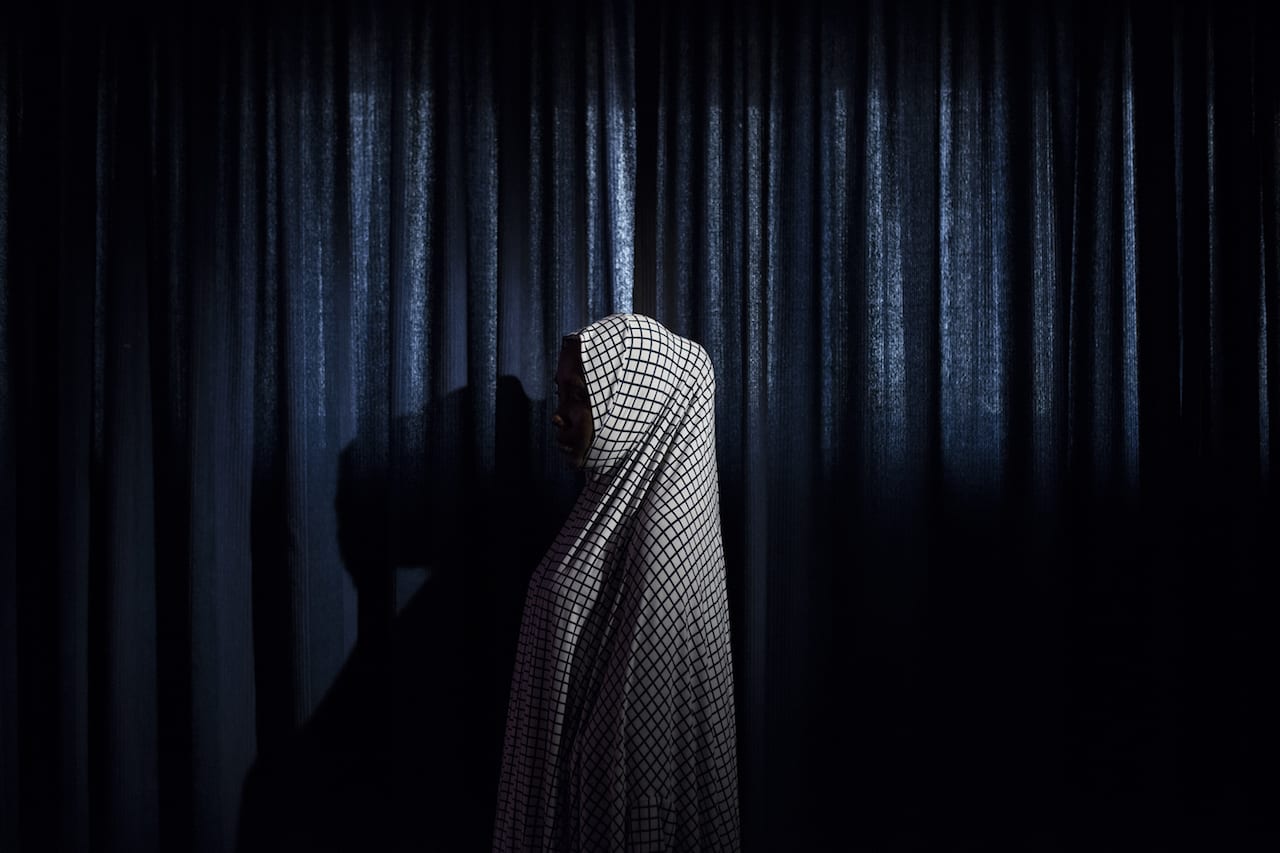Born in Australia in 1978, Adam Ferguson studied photography at Griffith University. He first won recognition for his work in 2009, when his photographs of the war in Afghanistan won awards from World Press Photo and Photo District News. Since then he has worked all over the world, for clients such as The New York Times, TIME Magazine, National Geographic, The Financial Times Magazine, WaterAid, UNICEF, and Human Rights Watch. Ferguson has been nominated for the World Press Photo of the Year for his shot of Aisha, a 14-year-old girl who was kidnapped by Boko Haram and wired for a suicide bombing, but managed to escape. The image comes from a series of portraits shot on commission for The New York Times, which has been nominated in World Press Photo’s People category.
BJP: Your image is very different to a hard-news style shot. Why did you choose to shoot a portrait (and in fact a series of portraits) in this way? How did you do so? Where did you take the shots, and how did you set them up?
Adam Ferguson: Because of the security situation I could not access these young women outside of the town were I photographed them and I also had to obscure their identities, so it was inherently a portraiture project in my eyes. I knew this going into it and drew reference from art and fashion photography and painting, where faces were obscured or hidden and I used this in an attempt to position the work outside of traditional photojournalism. I made each image at a different location – hotel rooms, local restaurants, houses. Each one is staged and the backgrounds deliberately chosen, but they also came together organically, everything was found as is.
I had actually taken a whole lighting set up to Nigeria, but the time to perfect strobe was taking too long so I ended up lighting them with the modelling light from one head and a few reflectors. It was basic, but I think the constant light gave it a more cinematic feel than flash. It was a collaboration between the subjects and I, I would allow each girl to present herself as she wanted to, then generally I would ask the subjects to exaggerate a pose they had done naturally. This always feels more authentic in portraiture, although I did intervene heavily in some of the images and manipulate how the subject sat for me.
BJP: What do you think this kind of image can do, compared to a shot that focuses on action? What would you say to a critic who argued that a portrait posed for the camera doesn’t reflect the world in the same way as an action shot with no intervention from the photographer?
AF: I believe a portrait can inspire just as much as an ‘action’ picture. A portrait asks the audience to engage directly with the subject so it’s confrontational in a way that an observed photo isn’t. In the near future we will live in a world were still images can be plucked from high resolution cameras embedded in our bodies, in drones, all over the place. The photojournalist making a press image is obsolete. With portraiture there is a human interaction that takes place, an identification if you will, and I don’t think that can be created without two humans in a space together.
These girls are of course impoverished and marginalised, but the journeys they had undertaken commanded such bravery. In homage to this bravery I tried to present the women as dignified and beautiful, hoping to transcend the more mainstream narratives we have seen around the Boko Haram phenomenon. Manipulating a scene through portraiture, I hope, allowed me to present this story beyond the narrative around poverty we have seen before.
Part of me doing this was an attempt to break down the visual barriers between the rich and the poor. We generally see fashion photography that is lit and beautiful and documentary photography that is gritty. I wanted to celebrate the young women rather than polarise them further. As a white man photographing black women in Nigeria, I also felt a responsibility to be clever about the way I presented these young girls and I didn’t want to over victimise them, they deserve better. I hope I achieved that.
BJP: How long have you been covering Boko Haram? What is it like to work on this kind of story? I imagine you need to have an in-depth understanding to shoot it at all…
AF: I have been covering the consequences of the conflict between the Nigerian Government and Boko Haram for 14 months, so I am by no means an expert on this conflict. I have had the privilege of working with Dionne Searcey who is the west Africa bureau chief for The New York Times and she has helped me navigate the landscape there.
BJP: Your image was shot for The New York Times (and they also commissioned Ivor Prickett’s nominated shots). How does it help having this kind of newspaper behind you? How did you start working for The New York Times, and what do you think of their approach to photography? Is it encouraging to see a big newspaper behind three of the shortlisted images – at a time when newspapers are said to be failing, and readers are suspicious of fake news and so on?
AF: I am freelance photographer, not staff at The New York Times, but the Times is an amazing platform that is committed to sustained and in-depth story telling, I feel fortunate to be able to collaborate with a publication that cares and invests so much. It helps me because I get the time and resources to do the best work I can and a large audience engages with it.
I started freelancing for the NYT in India a decade ago but beyond the organisation it’s really about my relationship with my photo editor. I have a great relationship with David Furst, the international photo editor who assigned this work. We talk a lot about the meaning of the work, how to approach it and how to push the narrative. I’m lucky to have someone who I trust will make the right decisions and who trusts me to tell the story.
In an age of declining traditional media and fake-news, I think a readership still looks at The New York Times and other credible media organisations as places with high ethics committed to quality journalism.




